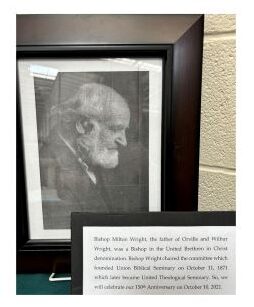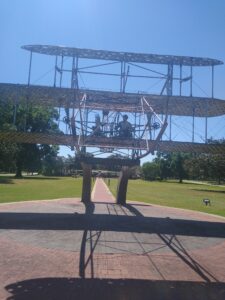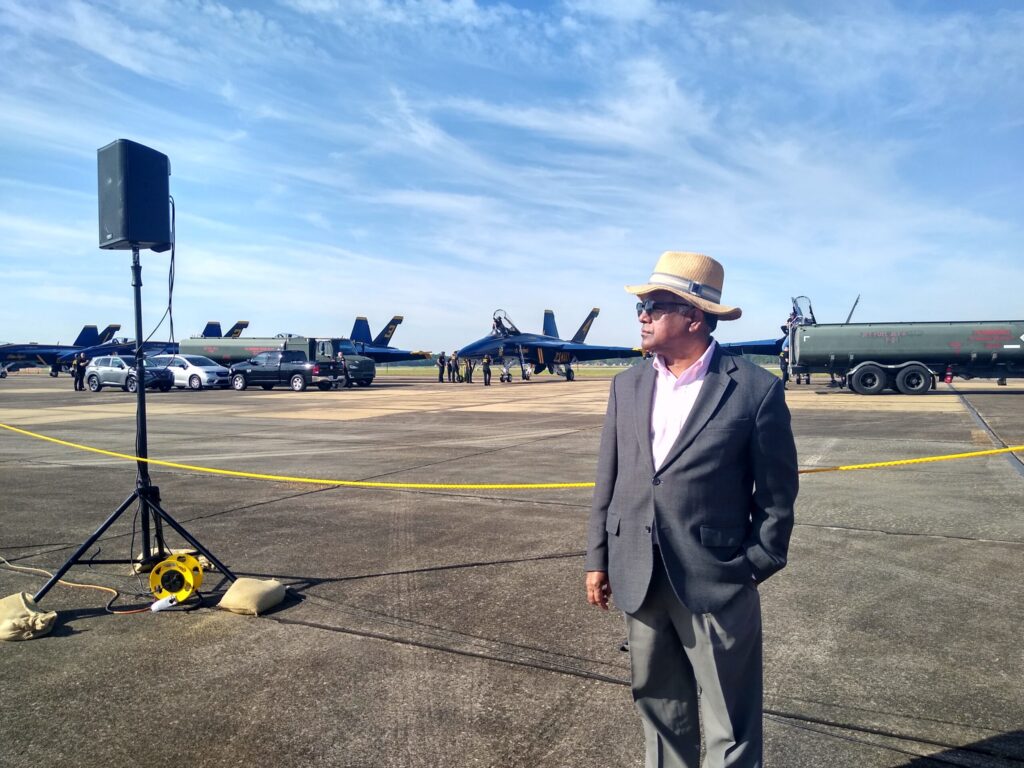“Children are educated by what the grown-up is and not by his talk.” – Carl Jung
Have you ever stood in silence, staring up at the blue sky, day or night, and wondered what would happen if the blue sky was forever out of reach for human ambition?
What if the notion of gliding, deeply ingrained in human consciousness, was merely an illusory concept passed down through the ages via mythology and stories, forever beyond our tangible reality?
Have you ever considered how religion and science interact so dynamically, and how this dynamic fusion affects the course of human progress?
How can faith, individual and communal, influence our goals and push us toward the seemingly unachievable as we traverse the paths of spirituality and science?
What effects do the values our families and communities instill in us have on our own goals and the types of contributions we make to society as a whole?
Have you ever stopped to think about what life might have been like without airplanes?
Without airplanes, how would humans travel great distances on Earth, crossing continents and cultures with unmatched ease and effectiveness?
What alternative modes of transportation would we rely upon to connect with loved ones, explore distant lands, and conduct global business, if airplanes had never been invented?
And what if history hadn’t happened because of two Ohio brothers whose visionary idealism and unbreakable will would have permanently changed the destiny of human civilization?
These questions, though hypothetical, underscore the profound impact of the Wright brothers’ invention on the modern world. For Orville and Wilbur Wright, the quest for flight was not merely a scientific pursuit but a bold declaration of human ingenuity and ambition.
Their invention of the first successful airplane changed society fundamentally and revolutionized transportation, bringing in a period of unheard-of exploration, innovation, and connectedness.
Above all, we will seek to unravel the timeless truths embedded within their story—truths that speak to the boundless potential of the human spirit and the transformative power of faith to transcend the limitations of the human condition.
In the tale of the Wright brothers, we find not only a testament to human ingenuity but a profound reminder of the enduring legacy of those who dare to dream, defy convention, and reach for the skies.
From Pulpit to Propeller
“Train up a child in the way he should go, And when he is old he will not depart from it.” – Proverbs 22:6 (NKJV)
The father of Orville and Wilbur Wright, the patriarch of the Wright family, and a man of unyielding conviction, Reverend Milton Wright, is at the center of this story. In 1864, Reverend Milton Wright was a bishop of the United Brethren Church, subsequently renamed the United Brethren in Christ, and he influenced his congregation’s spirituality.
Born on November 17, 1828, in Rush County, Indiana, Reverend Milton Wright experienced a religious awakening at the age of fifteen. He pursued his education at Hartsville College in Indiana and was licensed to ministry in 1852. The Church of the United Brethren in Christ ordained him in 1856, and within a year, he was sent to minister in the Pacific Northwest.[1]
In 1859, Reverend Milton Wright married Susan Koerner, and together they became parents of seven children: Reuchlin (1861-1920), Lorin (1862-1939), Wilbur (1867-1912), Otis and Ida (1870), Orville (1871-1948), and Katherine (1874-1929).

Photo source: United Theological Seminary
Furthermore, the United Theological Seminary in Dayton, Ohio, was founded by Reverend Milton Wright in 1871.[2]
One can question how Milton Wright’s spiritual beliefs and religious teachings affected his seven children’s worldviews and how they approached the quest for knowledge and invention, especially his sons Wilbur and Orville.
Reverend Milton Wright taught his sons something far more precious than knowledge or technical proficiency: the bravery to dream, to challenge expectations, and to push the boundaries of what was thought to be possible. He taught them to soar in a gravity-bound world.
The worldviews of his sons were profoundly shaped by Reverend Milton Wright, whose impact went well beyond the pulpit. His sons’ dreams took off because of his unwavering faith and moral leadership.
The Wright brothers’ journey, from the pulpit to the propeller, is a monument to the strength of family, faith, and the human spirit. It serves as a reminder that achieving something much greater—the limitless potential of people—is what truly defines greatness, not dominating the material world.
The Wright brothers undoubtedly drew on their father’s moral and ethical values as well as their sharp intelligence and unwavering work ethic as they set out on their mission to conquer the skies.
Their beliefs, instilled in them by their upbringing in a deeply religious home, were reflected in their unyielding resolve, precise attention to detail, and commitment to safety.
The profound lessons their father had instilled in the Wright brothers, who were setting out on their historic journey, included an unwavering faith in the limitless potential of humanity, a commitment to humility and perseverance, and the inherent harmony between science and spirituality.
Inspired by these timeless ideas and driven by an unwavering faith in the seemingly unattainable, Orville and Wilbur embarked on their mission to defy gravity.
Furthermore, how can the Wright brothers’ groundbreaking achievements in aviation contribute to our comprehension of the complex relationship between science and spirituality?
The deeper concerns of transcendence, meaning, and purpose that have consumed humanity for millennia must be balanced with the breathtaking spectacle of flying.
Early Years and Inspiration
Few stories about human achievement fascinate the imagination as much as the story of the Wright brothers and their audacious attempt to conquer the skies.
Above-stated questions provide direction and illumination as we set out to follow the Wright brothers’ “Flight of Faith,” revealing the complex and varied aspects of their remarkable story.
Born in Dayton, Ohio, to modest beginnings, Orville and Wilbur Wright set out on a mission that would change history forever. Their story was not just one of mechanical genius, though; it was also one of a journey driven by a deep faith that took them to previously unthinkable heights and challenged the conventional wisdom of the day. Pastor Milton Wright gave his sons a strong foundation of faith that would support their outstanding endeavors.
From their earliest days, Orville and Wilbur were steeped in curiosity and wonder, nurtured by their father’s encouragement to explore the natural world and seek answers to life’s mysteries.
Pastor Milton Wright’s belief in the harmony between faith and reason laid the foundation for his sons’ future endeavors, imbuing them with a steadfast conviction that science and spirituality were not opposing forces but complementary aspects of the human experience.
As the Wright brothers embarked on their historic journey, they carried with them the invaluable lessons imparted by their father: a belief in the inherent harmony between science and spirituality, a commitment to humility and perseverance, and above all, an unwavering faith in the potential of humanity.
Guided by these timeless principles, Orville and Wilbur set out to defy gravity itself, propelled by nothing more than their indomitable spirit and an unshakable belief in the impossible.
Their path was fraught with obstacles and setbacks, testing the limits of their resilience and pushing them to the brink of despair. Yet, through it all, they remained unwavering in their faith, drawing strength from the knowledge that they were part of something far greater than themselves.
For the Wright brothers, the pursuit of flight was not merely a scientific endeavor; it was a testament to the boundless power of faith to transcend the limitations of the human condition.
The Wright brothers’ bicycle business in Dayton, Ohio, proved instrumental in providing both financial support and practical expertise for their aviation experiments. Beginning in 1892, they repaired and manufactured bicycles under the “Wright Cycle Company” brand, earning a reputation for quality and innovation. The profits from this venture fueled their aviation pursuits, enabling them to pursue their passion without external funding.
The skills acquired in mechanics and manufacturing through their bicycle business directly contributed to their success in aviation, making their enterprise both a financial cornerstone and a practical training ground for their groundbreaking achievements.
The Wright brothers’ journey is a monument to the strength of faith, family, and the human spirit—from the pulpit to the propeller. It reminds us that real greatness is found in pursuing something much greater—the limitless potential of humanity—rather than in ruling the material world.
Remembering the Wright brothers’ incredible legacy, let’s not undervalue the part faith played in their journey. What propelled them to the stars and irrevocably changed the path of human history was their unshakable faith in the resiliency of the human spirit.
Their narrative is one of faith, bravery, and pursuing the unattainable with unwavering determination—from pulpit to propeller.
The Pursuit of Flight

Source: Wright Brothers Monument to Powered Flight
As we navigate the complexities of the 21st century, it is worth pausing to consider the transformative power of the Wright brothers’ invention and the countless ways in which it has shaped our lives.
What if Orville and Wilbur had never succeeded in achieving powered flight? How would the course of human history have been altered? What pivotal technological advancements might have been delayed or never realized?
Their commitment to safety, meticulous attention to detail, and unwavering determination were reflections of the values imparted to them through their upbringing in a devoutly religious household.
Their journey was paved with obstacles and disappointments that tried their perseverance to the breaking point. They took comfort in the idea that they were a part of something much bigger than themselves, which allowed them to hold fast to their faith despite everything.
The Wright brothers’ legendary determination to achieve powered flight stemmed from their deep fascination with aviation. Their systematic approach involved extensive study of aerodynamics, practical experimentation with gliders, and the development of innovative control systems.
They developed a ground-breaking three-axis control mechanism after realizing the significance of both lift and control.
At Kitty Hawk, North Carolina, the Wright brothers conducted pivotal experiments, refining their three-axis control system. They selected Kitty Hawk for its ideal wind conditions and expansive terrain, conducting glider tests over three summers.
Recognizing the importance of control, they developed a revolutionary system inspired by bird flight. Their breakthrough in 1902 enabled stable, controlled flight, paving the way for their powered flights in December 1903.
These experiments showcased their perseverance and systematic approach, laying the foundation for modern aviation.
Motivated by bicycle mechanics, they constructed a lightweight engine to propel their Flyer, which achieved the first-ever powered and controlled flight on December 17, 1903. Years of commitment and tenacity led to their success; they inspired upcoming inventors and laid the groundwork for contemporary aviation.
On December 17, 1903, at Kitty Hawk, North Carolina, Wilbur and Orville Wright made history with the first sustained, powered flights in a heavier-than-air aircraft, the Wright Flyer. This wooden and canvas aircraft, powered by a 12-horsepower gasoline engine they designed, featured a biplane design with a revolutionary three-axis control system.
The Flyer’s inaugural flight, piloted by Orville, covered 120 feet in 12 seconds, marking a monumental achievement in aviation. Subsequent flights that day, including one by Wilbur of 852 feet in 59 seconds, demonstrated the aircraft’s capability for controlled flight.
These flights ushered in the age of powered flight, showcasing the Wright brothers’ ingenuity and perseverance, and paving the way for future aviation advancements.
Remembering their modest beginnings is important as we wonder at the contemporary flying marvels that crisscross the skies above us. Remembering the Wright brothers and their legacy, let us honor the lasting impact of a loving father, ambitious sons, and the unwavering conviction that everything is possible when we have the wind in our sails and an adventurous spirit in our hearts.
And so, on a cold December day in 1903, Orville and Wilbur Wright achieved the impossible, defying gravity and soaring into the heavens aboard their fragile flying machine. In that moment, they not only made history but reaffirmed the timeless truth that with faith as our guide, anything is possible.
Susan Koerner, mother of Wilbur and Orville died on July 4, 1889. Reverend Milton Wright lived to see his sons succeed in their dream of investing in powered, controlled, and heavier than-air flight. He lived with Orville and daughter Katherine at Hawthorn Hill in Oakwood, Ohio, from 1914 until his death on April 3, 1917. He is buried in Woodland Cemetery, Dayton, Ohio.[3]
Legacy and Impact:
The Wright brothers’ groundbreaking contribution to flight represents a turning point in human history. Their famous flight in 1903 at Kitty Hawk signaled the beginning of powered flight and started a revolution in invention and transportation.
Modern aviation technology was founded upon their revolutionary contributions to aerodynamics and control systems. They have influenced not just aviation but also international travel and communication with their unyielding determination and inventive energy, which continue to inspire future generations. They have made a lasting impact on human progress with their essentially revolutionary contributions.
An era of creativity and invention in aviation began in 1903 with the accomplishments of the Wright brothers at Kitty Hawk. Their groundbreaking work in control systems and aerodynamics transformed the area of aircraft engineering and radically altered the course of contemporary aviation.
Their profound influence catalyzed the growth of the aviation industry, driving advancements in technology and operational capabilities. Beyond the realm of technology, their legacy resonates globally, evoking a sense of wonder and exploration. In essence, their impact on aviation and society remains profound, exemplifying the boundless possibilities of human ingenuity.
Conclusion
The Wright brothers’ legendary reputation as flight pioneers accounts for the accomplishments’ lasting significance. Their remarkable achievements at Kitty Hawk in 1903 marked the beginning of powered flight and demonstrated the strength of tenacity and creativity.
Their legacy is a constant reminder of the limitless potential of human endeavor and the long-lasting effects of hard work and imagination.
Their impact extends beyond aviation as symbols of inventiveness, motivating successive generations in diverse domains. They inspire generations of people in many industries and are icons of creativity that go beyond flying.
In summary, the accomplishments of the Wright brothers cemented their reputation as genuine aviation pioneers and continue to pique people’s curiosity and spur creativity across the globe.
Personal Reflection

Source: Blue Angles 2024 Air Show
As a member of the environmental consulting support team at a recent 2024 air show, I found myself deeply reflecting on the profound impact of the Wright brothers’ legacy on modern aviation. Surrounded by the spectacle of cutting-edge aircrafts, including awe-inspiring performances by the Blue Angels, I couldn’t help but marvel at how the pioneering spirit of Orville and Wilbur Wright in aerodynamics and control systems continues to shape the aviation landscape today.

Source: Blue Angles Air Show
Their relentless pursuit of excellence serves as an enduring inspiration, not only to aviation enthusiasts like myself but to all who are touched by their remarkable story. As I witnessed the culmination of their legacy in the skies above, I felt compelled to share their story and its enduring significance in shaping the future of flight in this article.
The achievements made by the Wright brothers are essentially proof of the strength of human creativity and the long-lasting effects of passion and tenacity. Their narrative serves as a reminder that, despite obstacles that appear insurmountable, pursuing our goals can result in enormous accomplishments that inspire generations to come.
Disclaimer
The opinions stated in this article belong to the author and do not represent the views of any publication or organization. Although every effort has been taken to guarantee the authenticity and consistency of the material offered, readers are urged to carry out additional investigations and speak with knowledgeable professionals, or scholarly authorities to have a thorough grasp and interpretation of the subjects covered.
This is not professional advise; it is meant mainly for general informational reasons. Before relying on the information provided to make any decisions, readers are advised to carry out their research and speak with qualified subject matter experts.
References to or citations from outside sources do not imply endorsement or approval by the author. Any trademarks, service marks, or logos that are mentioned in this article belong to their respective owners.
Footnotes:
[1] United Theological Seminary
[2] United Theological Seminary Article- “Milton Wright: Minister, Missionary, Educator, and a Founder of United Theological Seminary.”
[3] United Theological Seminary Article- “Milton Wright: Minister, Missionary, Educator, and a Founder of United Theological Seminary.”

